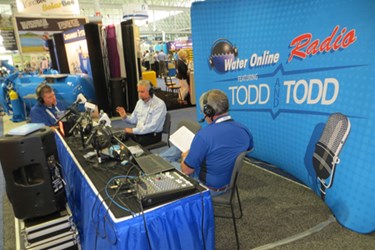Is UV Poised For Increased Adoption?

Disinfection can be achieved through chlorine, membranes, ozonation, or UV (among others), but the latter may be best equipped to serve the changing water treatment market.
Rick VanSant, president and CEO of UV Pure, boils it down simply: “It's a very efficient technology, compared to others — lower cost and more effective. That is a pretty powerful combination in the marketplace.”
In this interview with Water Online Radio, VanSant discusses the evolution of UV from a “fairy dust kind of technology” to “the best available technology for disinfection, period.” In addition to its effectiveness at deactivating pathogens such as bacteria and viruses, VanSant touts UV’s scalability, particularly its ability to be scaled down for smaller, decentralized operations.
“One of the big trends, globally, is a move away from extremely large, capital-intensive, centralized plants — the conventional sorts of approach where you bring water to a plant to have it treated, or take water away from a plant after it's been treated through miles and miles of expensive pipe infrastructure.
“The alternative is distributed treatment — smaller plants that are closer to where either drinking water is needed or wastewater is created, before it's put back in the environment,” VanSant notes.
But it is not a panacea or cure-all. VanSant explains:
“UV's disadvantage is it has no residual. The water is deactivated when it leaves the UV system, but if it's contaminated 20 miles down a pipe, then there's nothing that UV can do to help treat that. Often, UV is used and then a little bit of chlorine can be put in, so it’s less chemical, less costly, and less dangerous, because chlorine is related to the creation of carcinogens. In small applications, it is a replacement [for chlorine].”
To get the full story on UV’s capabilities, applications, and potential, click the Radio Player below.
